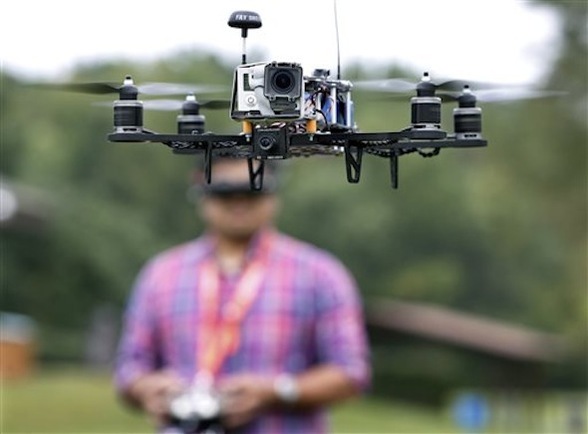(Source: cjr.org)

On Monday, the network announced a partnership with the Federal Aviation Administration to study how news organizations can safely use the nascent technology in US airspace. CNN will work with academic experts and public agencies to discover best practices for newsgathering-by-drone, sharing information with federal regulators in the process.
The machines represent a potential game-changer for news coverage of live events, difficult terrain, or dangerous areas. As CJR wrote in May, they “could fundamentally transform a journalist’s ability to tell stories.” But while a number of individuals and organizations have begun experimenting with drones, CNN is the first major American media outlet to take formal legal steps toward exploring those possibilities. Several bureaucratic hurdles remain, however, before any of the network’s drones will actually take flight, even for research. “This is the beginning of a process,” CNN Senior Vice President David Vigilante said in an interview.
“Our holy grail is the ability to fly for extended periods using professional-grade cameras and return high-definition videos to the ground, live,” he said. “Putting up a GoPro for five minutes just isn’t the same. For breaking news, it just doesn’t meet our needs.”
That holy grail is not yet on the horizon, of course. Yet a number of news organizations reporting Monday on CNN’s agreement with the FAA implied that the appearance of drone footage on airwaves was imminent. What the partnership actually allows is for CNN to conduct authorized trials at controlled sites with an academic partner. The network teamed up in June with the Georgia Tech Research Institute, a leader on drone research located near CNN headquarters in Atlanta.
“We’ll go to some isolated site away from anybody so we can work out all the problems safely,” said Mike Heiges, principal research engineer at the Georgia Tech Research Institute. “CNN won’t be using the footage for commercial purposes. All the activity with us is just the research.”
The FAA faces a September deadline to begin unveiling regulations for domestic use of unmanned aerial systems—the government’s clunky parlance for “drones.” Though the technology has gained infamy in recent years as a tool of the US military and intelligence agencies, its private-sector possibilities range from agriculture to real estate to filmmaking. Current federal rules prohibit drone use for such commercial purposes, including journalism, with regulators citing a need for better “understanding of operational issues, such as training requirements, operational specifications, and technology considerations.”
Alan is serial entrepreneur, active angel investor, and a drone enthusiast. He co-founded DRONELIFE.com to address the emerging commercial market for drones and drone technology. Prior to DRONELIFE.com, Alan co-founded Where.com, ThinkingScreen Media, and Nurse.com. Recently, Alan has co-founded Crowditz.com, a leader in Equity Crowdfunding Data, Analytics, and Insights. Alan can be reached at alan(at)dronelife.com